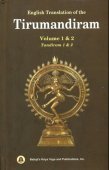Supreme state: 1 definition
Introduction:
Supreme state means something in Hinduism, Sanskrit. If you want to know the exact meaning, history, etymology or English translation of this term then check out the descriptions on this page. Add your comment or reference to a book if you want to contribute to this summary article.
In Hinduism
Yoga (school of philosophy)
Source: ORA: Amanaska (king of all yogas): A Critical Edition and Annotated Translation by Jason BirchThe Supreme State is denoted in the Sanskrit language as “paramaṃ padam”, according to the Maitrāyaṇīyopaniṣat 6.34.7.—Accordingly, while describing the no-mind state: “Having made the mind free from inertia and distraction, it [becomes] very still. When it goes to the state of no mind, then that is the supreme state (paramaṃ padam)”.

Yoga is originally considered a branch of Hindu philosophy (astika), but both ancient and modern Yoga combine the physical, mental and spiritual. Yoga teaches various physical techniques also known as āsanas (postures), used for various purposes (eg., meditation, contemplation, relaxation).
See also (Relevant definitions)
Partial matches: State.
Query error!
Full-text (+121): Vishnupada, Camracciyam, Anavacchinna, Vritti, Asuci, Samanaska, Avikrita, Avijnanavat, Vijnanavat, Avacchinna, Nirbhara, Anandanirbhara, Inertia, Shuci, Amita, Grasa, Prakshaya, Amanibhava, Grasaka, Prathayitva.
Relevant text
Search found 59 books and stories containing Supreme state, Supreme states; (plurals include: Supreme states, Supreme stateses). You can also click to the full overview containing English textual excerpts. Below are direct links for the most relevant articles:
Shurangama Sutra (with commentary) (English) (by Hsuan Hua)
Guan Yin lists the two sources < [Chapter 2 - Twenty-five Means to Enlightenment]
Attachment to an unattainable craving < [Chapter 6 - The Consciousness Skandha]
Attachment to a refuge that is not actually a refuge < [Chapter 6 - The Consciousness Skandha]
Vivekachudamani (by Shankara)
Traces of Mysticism in Jainism (Study) (by Sadhvi Madhystha Prabha)
1. Introduction (spirituality and supernatural powers) < [Chapter 5 - Mysticism at the level of Body and Mind]
9. Brāhmaṇic and Śramaṇic Tradition < [Chapter 7 - Conclusion]
Nine Tattvas (3-4): The concepts of Puṇya and Pāpa < [Chapter 4 - Concepts of Jainism and Mysticism]
Jnaneshwari (Bhavartha Dipika) (by Ramchandra Keshav Bhagwat)
Verse 5.26 < [Chapter 5 - Sannyasa-yoga]
Verse 2.72 < [Chapter 2 - Samkhya-Yoga]
Conclusion of chapter eighteen < [Chapter 18 - Moksha-sannyasa-yoga]
Jain Science and Spirituality (by Medhavi Jain)
5.4. Purpose of Temples < [Chapter 6 - Spirituality in Jainism]
4. Nine Categories of truth (Nava Tattva) < [Chapter 6 - Spirituality in Jainism]
Laghu-yoga-vasistha (by K. Narayanasvami Aiyar)
Part 3 - The Story of the Bilva Fruit < [Chapter VI - Nirvāṇa-prakaraṇa]
Part 12 - The Story of Bhīṅgiśa < [Chapter VI - Nirvāṇa-prakaraṇa]
Part 5 - The Story of Kacha < [Chapter IV - Sthiti-prakaraṇa]
Related products
